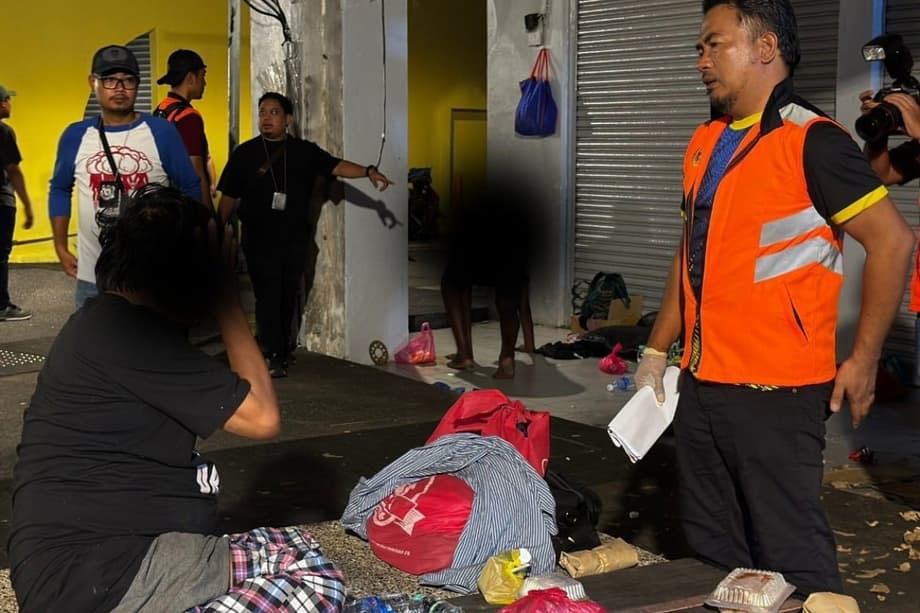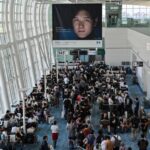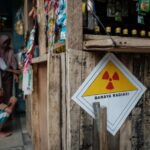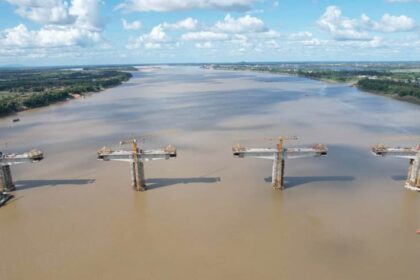Why Kuala Lumpur is clearing its streets before the summit
With Kuala Lumpur preparing to host next week’s ASEAN summit, Malaysian authorities have intensified operations to remove homeless people from central districts. Officials say the initiative is about safety, public health, and projecting a welcoming image for visiting leaders. Critics see a familiar pattern before high profile events, a rapid sweep of people living on the streets that does little to resolve the causes of homelessness.
- Why Kuala Lumpur is clearing its streets before the summit
- What the operation looks like on the ground
- A familiar pattern before major events
- Does rounding up the homeless solve the problem
- Who is being targeted and where do they go
- The role of soup kitchens and civil society
- Why ASEAN optics weigh on policy choices
- Better options the city could deploy now
- Regional lessons and recurring risks
- Accountability and transparency
- What to Know
Authorities say around 545 people, including 180 foreigners, have been picked up since February. The latest pre dawn operation, conducted early Thursday, brought 101 people to a city transit center for the homeless. Teams focused on well known hotspots, including Bukit Bintang, Masjid Jamek, and Jalan Tuanku Abdul Rahman, all within a few kilometers of the conference venue. Officials described the effort as a rescue mission. Volunteer groups who run soup kitchens and outreach describe disruption to services that many people rely on for meals, medicine, and basic support.
The friction points are clear. City officials want quieter sidewalks as motorcades arrive and hundreds of delegates fan out across the capital. Social workers and advocates are urging a shift away from rapid roundups, and toward policies that provide stable shelter, case management, and a route into housing and work. The debate over what should happen on the streets near the venues has quickly turned into a debate over what should happen next month and next year, long after the motorcades have left.
What the operation looks like on the ground
The current drive is known as KL Strike Force Aktiviti Orang Papa dan Kanak Kanak, translated as activities concerning destitute persons and children. Multi agency teams have targeted specific areas where street sleeping and informal encampments are common. People encountered on the street are transported to the Medan Tuanku Homeless Transit Centre in central Kuala Lumpur, where officials say they can access shelter and basic services.
Che Samsuzuki Che Noh, director of the Federal Territories Social Welfare Department, said the operation has two objectives, to reduce risks faced by people living on the street and to protect the country’s image as it hosts international meetings. He described the approach as collective action by city agencies to address safety and health concerns.
“This operation aims to foster a more conducive environment and safeguard the country’s image in the eyes of the international community. In terms of food, clothing and basic needs, they are not neglected. But when it comes to safety, health and the country’s image, these are aspects that must be addressed collectively.”
Teams typically work in the early morning, when most people are still in place. Those picked up may be screened for health needs and referred either to welfare facilities or, in the case of some foreign nationals without documentation, to immigration authorities. Officials say the intention is to provide temporary shelter and connect people with services. Outreach groups say many of those moved do not remain in facilities for long and often return to the streets once the immediate operation ends.
A familiar pattern before major events
Street sweeps before global or regional meetings are not unique to Kuala Lumpur. Host cities across Southeast Asia have repeatedly cleared sidewalks ahead of summits and state visits. The pattern is often similar, short notice operations, bus transfers to welfare centers, and a focus on central districts that will be most visible to visitors. Human rights groups have long argued that these actions criminalize poverty and shift it out of sight rather than reduce it.
In other capitals, detained people have sometimes been sent to poorly resourced centers that offer little more than temporary beds, basic meals, and few pathways into work or permanent housing. Some centers have faced allegations of abusive conditions. These episodes often generate a round of criticism after the event ends, yet the cycle tends to repeat whenever a city is under the international spotlight.
The dilemma is straightforward. City leaders want order, lower crime, and clean sidewalks. Residents want safe public spaces. People living without housing want predictable access to food, hygiene, and services, and a realistic path into stable housing. Operations conducted right before summits rarely deliver on all of these goals at once. The evidence from cities that have reduced street homelessness points to sustained investments, not periodic sweeps.
Does rounding up the homeless solve the problem
Short term sweeps can change what a city looks like for a week. They do not change the conditions that push people onto the street. Homelessness has many drivers, including eviction, job loss, untreated mental health conditions, addiction, family breakdown, and barriers faced by migrants and refugees. Food lines and nightly shelters help with survival. Long term solutions require somewhere to live and the support to remain housed.
What research and practice show
Public health studies and city level programs across the world have found consistent results. When people receive stable housing first, with minimal entry barriers and wraparound services such as counseling, basic healthcare, and help with job placement, they exit street living at higher rates and are less likely to return to homelessness. Police led sweeps tend to create churn. People are moved along, lose ties to outreach workers, have belongings confiscated or damaged, and often miss medical appointments or identification checks that are critical for getting benefits.
The immediate goal of keeping sidewalks clear can be met more sustainably when a city expands shelter capacity that accepts people as they are, increases on site case management, and pairs outreach with guaranteed placements into transitional or permanent housing. These approaches are not just more humane. Over time, they tend to cost less than repeat cycles of street enforcement, detention, and emergency care.
Who is being targeted and where do they go
The people affected include Malaysians and foreign nationals. Some are long term street sleepers who know the outreach teams by name. Others are new to the streets after a job loss or eviction. A share are migrants or refugees who lack steady work or legal status. Malaysia is not a party to the 1951 Refugee Convention, so refugees and asylum seekers often live in a gray zone, recognized by UNHCR cards but without formal legal protection under domestic law. When operations pick up foreigners without documents, they can be referred for immigration processing rather than social services.
Transit centers and the Destitute Persons Act
People taken in during these drives are commonly brought to transit centers that provide beds, showers, and basic meals. If they are identified as needing longer support, they may be referred to welfare homes under the Destitute Persons Act 1977 (DPA). That law allows authorities to remove a person from public spaces and place them temporarily in a facility while social workers assess their situation. A magistrate can issue orders that extend institutional care under certain conditions. Rights advocates have criticized the DPA for decades, arguing that involuntary detention of people who have committed no crime violates basic liberties and can trap them in a system with few exits.
Malaysia’s welfare agencies say the intent is to stabilize people and connect them with family, training, or work. Many people on the streets avoid longer placements because of curfews, restrictions, and the fear of losing the little autonomy they have. Without sufficient transitional housing, mental health services, and employment programs, people often cycle back to the same sidewalks once the event driven operation winds down.
The role of soup kitchens and civil society
Kuala Lumpur’s volunteer networks have sustained nightly meal lines and outreach patrols for years. These groups fill the gaps between limited shelter capacity and the daily realities of surviving without a home. Volunteers say summit week operations disrupt routines that the homeless rely on, including predictable meal times and locations where outreach teams can find clients for health checks or to replace documents.
The tension between enforcement and support is not new in the capital. A plan in 2014 to curtail soup kitchens near the city center triggered a public backlash and gave rise to closer cooperation between authorities and civil society. That cooperation ebbs when the focus turns to image management for major events. Volunteers argue that the city would get better results by funding consistent day centers, expanding storage facilities for personal belongings, and guaranteeing placements into housing rather than temporary beds that end with a check out date.
Why ASEAN optics weigh on policy choices
Malaysia’s role as summit host has raised the stakes. The meeting is expected to draw leaders and ministers from across the region, alongside partner countries. International attention is intense this month as major powers joust over trade rules and security, from tariff threats to export controls. Law enforcement actions against cyber scamming networks in Southeast Asia, including high profile cases in Cambodia and Myanmar, are also in the headlines. The combination means cameras will be trained on Kuala Lumpur’s streets as much as on the conference stage.
Diplomacy inside the venue is likely to center on regional growth, supply chain resilience, and humanitarian crises, including the ongoing emergency in Myanmar. Malaysian leaders have argued that a more active regional role can improve humanitarian access and safety for aid workers. Those policy aims have domestic reflections. A city that protects vulnerable people at home while projecting order is more persuasive abroad. That is why the debate over roundups versus services has national stakes during a summit week.
Better options the city could deploy now
City officials face a difficult balancing act. There are steps that can reduce visible street homelessness quickly without relying on detention or repeated sweeps. These measures have worked in other cities when properly funded and monitored.
Actions with immediate payoff
First, expand 24 hour shelter capacity with fewer entry barriers. Many people avoid facilities that separate couples, restrict belongings, or require strict entry conditions. Opening flexible spaces with storage, showers, and clinics, even on a temporary basis, draws people indoors and keeps them engaged with services. Second, attach dedicated case managers to each shelter bed and outreach team. The link between a known social worker and a guaranteed placement reduces churn.
Third, create rapid access to documents and benefits. Many cannot secure jobs or rental rooms because they lack identification, bank accounts, or medical documents. Placing mobile registration units at transit centers speeds up the process. Fourth, fund day centers in areas where people already congregate. These hubs provide basic hygiene, lockers, charging stations, quiet rooms, and consistent contact with counselors. They also reduce the friction between businesses, residents, and people living on the street.
Partnerships that extend capacity
Finally, set clear protocols with soup kitchens and NGOs during summit week. Mapping meal lines and outreach schedules, then coordinating police activity around them, prevents accidental disruption. A limited amnesty from detention for people engaged with services, paired with fast track referrals to shelter and treatment, can keep sidewalks passable while sustaining trust. If authorities do rely on the DPA, they can publish transparent criteria and time limits for placements and guarantee legal aid, family contact, and independent monitoring of welfare facilities.
Regional lessons and recurring risks
Experience across the region points to a hard lesson. When urban policy treats rough sleeping as a nuisance to be swept away, the outcome is displacement without resolution. Reports from other Southeast Asian capitals describe cycles of pre event detentions followed by quiet releases when the spotlight fades. Allegations about poor conditions inside some welfare centers have been frequent. These approaches often damage trust between the homeless community and the very agencies that need to build relationships to move people off the street.
Malaysia has an opportunity to chart a different course. A summit is a moment of scrutiny but also a moment to demonstrate what works. Expanding shelter that people will use, adding case management, and making concrete placements into housing are steps that can be shown to visiting delegations as examples of practical solutions. City leaders can still keep sidewalks orderly during the event while signaling a move away from tactics that rely on forced removal.
Accountability and transparency
Public confidence grows when authorities publish clear data and rules. Regular updates on the number of people transported, how many accept shelter, how many are referred to welfare homes, and how many secure longer term housing would help the public judge the operation’s outcomes. Independent access for Malaysia’s human rights commission, legal aid groups, and civic watchdogs to transit centers and welfare homes would add a layer of assurance that rights are respected. A public feedback channel for businesses, residents, and the homeless community can surface problems early and reduce confrontation.
Officials argue that protecting the city’s image requires visible action. A more durable image rests on reducing visible homelessness because people move indoors by choice and stay there. That is a higher bar, but it is the only approach that lowers the chance of repeating the same operation at the next event.
What to Know
- Authorities in Kuala Lumpur have rounded up hundreds of homeless people ahead of the ASEAN summit, citing safety, health, and national image.
- Since February, 545 people have been picked up, including 180 foreigners. In the latest sweep, 101 people were brought to a city transit center.
- Operations focus on central areas near summit venues, including Bukit Bintang, Masjid Jamek, and Jalan Tuanku Abdul Rahman.
- Officials say people receive basic necessities and shelter. Rights groups and volunteers argue the approach disrupts services and does not reduce homelessness.
- Some people are processed under the Destitute Persons Act 1977, which permits placement in welfare facilities. Advocates have criticized the law for enabling involuntary detention.
- Foreign nationals without documentation may face immigration processing rather than social services, a risk for refugees in a country that has not signed the 1951 Refugee Convention.
- Regional precedent suggests pre event sweeps move people out of sight temporarily but rarely offer pathways to housing.
- Experts recommend expanding flexible shelter, on site case management, day centers, and guaranteed placements into housing to reduce street homelessness more sustainably.












